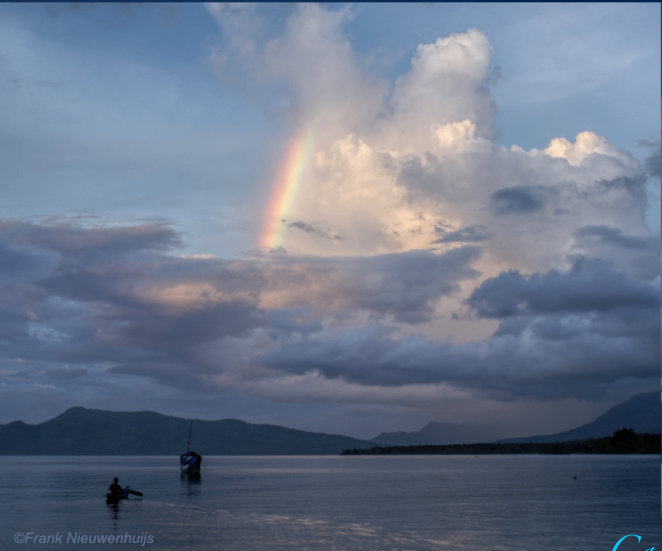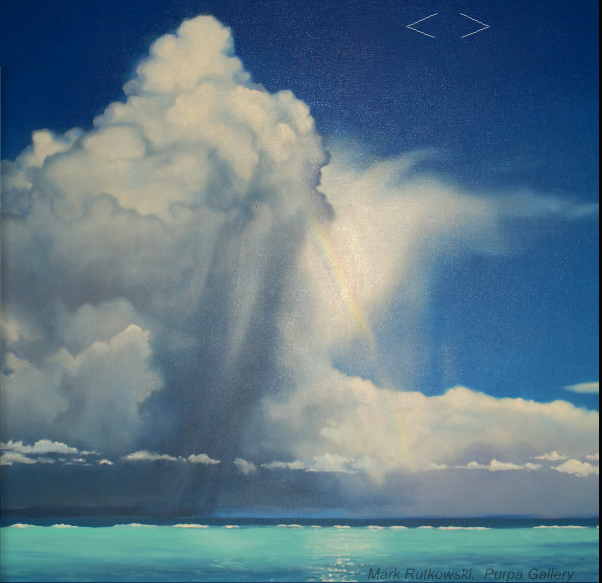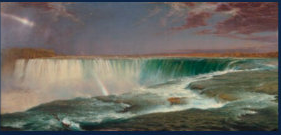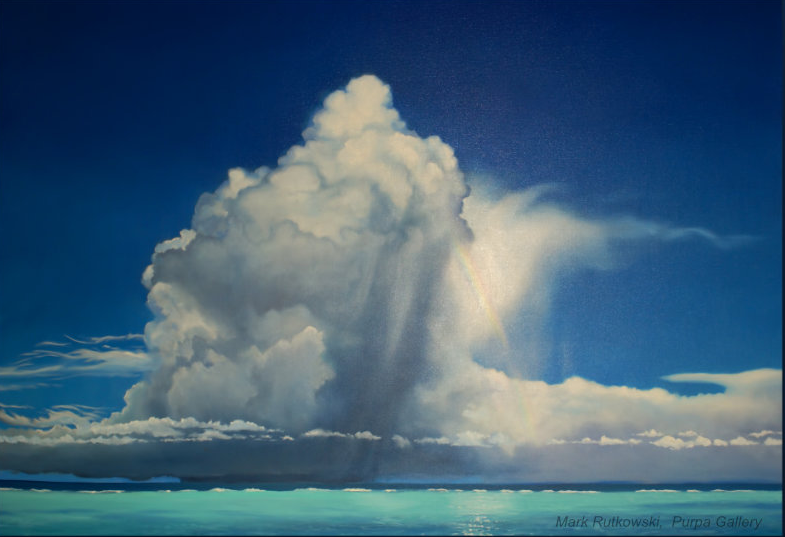Camera and Art, Indonesia
Camera and Art: Capturing the Beauty of Indonesia's Atmospheric Optics
Indonesia is a country blessed with breathtaking natural landscapes and vibrant artistic expressions. In this article, we explore the fascinating connection between camera lenses and the world of art, focusing on atmospheric optics. From stunning rainbow vistas to towering cumulonimbus clouds, the interplay between photography and painting allows us to capture and appreciate the ethereal beauty of Indonesia's skies.
A Mirror Image of Nature
When Frank Nieuwenhuijs photographed a rainbow against a dramatic sky at Desa Wairterang on the north coast of East Flores, little did he know that he would soon stumble upon a painting by artist Mark Rutkowski that mirrored this spectacular scene. Both the photograph and the painting feature enormous tropical cumulonimbus clouds dominating the landscape. The convergence of photography and art brings these natural wonders to life, showcasing their power and beauty.
Painting Rainbows: A Delicate Art
Rainbows pose a unique challenge for landscape painters. The intensity and purity of their colors are additive, while paints are subtractive, making it easy for mixtures to turn muddy. Capturing the ethereal nature of rainbows in paint requires finesse, as thick pigments can inadvertently transform them into rigid structures rather than delicate arcs bridging worlds. Artists like John Constable and J.M.W. Turner have approached this challenge with varying degrees of success, each imparting their own interpretation onto the canvas.
The Intricacies of Rainbow Painting
To truly appreciate the complexities of painting rainbows, one must dive into the works of artists like Frederic Church, known for his mastery of the Hudson River School. Church's paintings, such as "Niagara" and "Niagara from the American side," accurately portray the vibrant hues and radiance of rainbows. However, even a skilled artist like Church faced challenges when capturing rainbows in his work. In "Rainy season in the tropics," the colors appear too thick and banded, with the secondary rainbow narrower than the primary and too close to it. Painting rainbows requires a delicate balance of technique and artistic interpretation.
Tropical Cumulonimbus: A Photographer's and Painter's Dream
Both photographers and painters find themselves drawn to the captivating presence of tropical cumulonimbus clouds. These towering cloud formations, often with characteristic anvil tops, create a striking visual impact on the horizon. In Frank Nieuwenhuijs' photograph, the base of the cloud releases rain, blackening the horizon and partially obscuring distant hills. If these images were videos, one could almost imagine the flickering lightning within these majestic clouds.
The Science Behind Cumulonimbus Clouds
Tropical cumulonimbus clouds play a significant role in global atmospheric circulation by transferring heat and moisture from the tropics. The intense ground heat warms low-level moist air, causing it to rise rapidly in powerful updrafts. As the air expands and cools, water droplets condense, forming the towering cumulonimbus clouds. These clouds can reach heights of up to 12 kilometers, with some even piercing through into the stratosphere. Individual cumulonimbus cells can organize into larger mesoscale convective systems, further enhancing their visual impact.
In conclusion, the connection between camera lenses and artistic expression allows us to capture and appreciate the mesmerizing atmospheric optics found in Indonesia. Whether through photography or painting, artists and photographers alike strive to convey the ethereal beauty of rainbows and towering cumulonimbus clouds. Each medium presents its own unique challenges and opportunities, offering a diverse range of interpretations that showcase the wonder of Indonesia's skies.


Frank Nieuwenhuijs photographed this rainbow against a dramatic sky at Desa Wairterang on the�north coast of East Flores, Indonesia. Just a few days later he was browsing the Purpa Fine Art Gallery Seminyak on Bali. He was astonished by the painting at right by artist Mark Rutkowski. It could almost be a mirror image of the same spectacular scene. Enormous tropical cumulonimbus dominates both.

Paint colours are subtractive.
Primaries mix to black

Light colours add.
Primaries mix to white
Painting Rainbows
Rainbows are one of the most challenging landscape painting subjects.
Their colours are intense and (fairly) pure and additive. In contrast, paints are subtractive and the necessary mixtures all too easily slide into muds. Rainbows are ethereal, they do not really exist except in our minds yet the thick pigments needed to achieve their colour saturation easily transforms them into the rigid girder work of a railroad bridge rather than the delicate mind work of Bifrost, the rainbow bridging the Viking Worlds of Midgard and Asgard.
John Constable�s bow in his �Salisbury Cathedral� is an unbelievable solid and steely affair. Turner�s �Buttermere Lake� bow is moody and almost colourless in a dramatically dark landscape. Yet it feels like a rainbow, one that could well have resulted from small raindrops producing a broader and weaker coloured near fogbow.
Frederic Church of the Hudson River School got it right in his �Niagara� and to a lesser extent in �Niagara from the American side�. Both need viewing in the flesh to properly appreciate them. Stand up close enough to make the gallery attendant nervous and so that the bow really does have a radius of 42�. Church did less well in his �Rainy season in the tropics�: His colours are too thick, too banded and the secondary is narrower than the primary not to mention too close to it.
It is easy to criticise - try painting one! One secret, well shown above by Mark Rutkowski is to portray only a segment. Be brave - outdo Constable!
Tropical Cumulonimbus
Both photo and painting portray grouped towering cumulonimbus clouds, some with characteristic anvil tops.
The artist’s horizon is blackened by rain pouring from the cloud’s base. Rain obscures some distant hills in Franks image. If the images were videos the clouds might flicker with lightning.
Tropical cumulonimbus clouds are one of the drivers of global atmospheric circulation by transferring heat and moisture from the tropics. Intense ground heat warms low-level moist air causing it to bubble upwards in powerful updrafts, as it expands it cools and water droplets condense. Eventually the cloud top reaches equilibrium where high altitude winds form the anvil.
The top is some 12km high at the tropopause and some clouds actually punch through into the stratosphere. Individual cumulonimbus cells can organise into larger mesoscale convective systems.


Note: this article has been automatically converted from the old site and may not appear as intended. You can find the original article here.
Reference Atmospheric Optics
If you use any of the definitions, information, or data presented on Atmospheric Optics, please copy the link or reference below to properly credit us as the reference source. Thank you!
-
<a href="https://atoptics.co.uk/blog/camera-and-art-indonesia/">Camera and Art, Indonesia </a>
-
"Camera and Art, Indonesia ". Atmospheric Optics. Accessed on April 23, 2024. https://atoptics.co.uk/blog/camera-and-art-indonesia/.
-
"Camera and Art, Indonesia ". Atmospheric Optics, https://atoptics.co.uk/blog/camera-and-art-indonesia/. Accessed 23 April, 2024
-
Camera and Art, Indonesia . Atmospheric Optics. Retrieved from https://atoptics.co.uk/blog/camera-and-art-indonesia/.